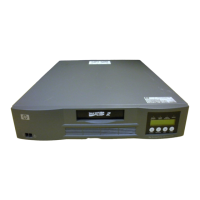HP StorageWorks iSCSI Feature Pack User Guide 5
Getting Started
The following steps provide an overview of the tasks you must complete to configure your
system. To install the iSCSI Feature Pack software:
1. For systems with a DVD/CD-ROM drive:
a. Insert the iSCSI Feature Pack installation CD into your CD-ROM.
b. Click
setup.exe
.
2.
For systems without a DVD/CD-ROM drive
, you can either share the CD from
another system, or copy the CD across the network.
a. To share the CD from another system:
•
Insert the CD into another system and share out that system’s DVD/CD-ROM drive.
•
From the NAS storage server, map a drive to the CD share and install from it. You
can map to the DVD/CD share from your iSCSI storage server via Windows
Terminal Services client,or via Remote Desktop if you do not have a monitor on your
NAS storage server.
b. To copy the CD across the network:
•
Create a directory on the C: drive of the NAS system (e.g. C:\iSCSI), and make it a
share with Full Control (read/write permission).
•
Connect to the share from a remote system that has a CD-ROM drive using the
Microsoft File Explorer.
•
From the remote system, copy the contents of the CD-ROM to the share on the
NAS system.
•
On the NAS system, use My Computer or the File Explorer to browse the directory
that was created (e.g. C:\iSCSI). The contents of the iSCSI Feature Pack CD will
now be in the directory. Click
setup.exe
to start the installation.
If your system does not have a monitor, you can use the Windows 2000 Terminal
Services client or
Remote Desktop
(available from the
Maintenance
tab in the Web
Administration console) to install the software.
NOTICE: The name of your iSCSI Feature Pack system cannot exceed 15 characters. This is a
NetBIOS restriction. If your server name is longer, you must rename it before installing
the iSCSI Feature Pack software.
NOTICE: You must use the ANSI machine name for the iSCSI Feature Pack system if you are
running the system on a non-English language machine.
NOTE: Your system will be rebooted after the installation.

